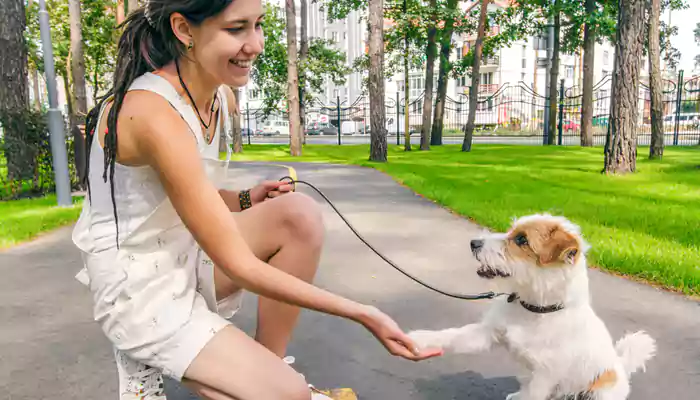Train Your Dog And Build A Stronger Bond Through Positive Reinforcement
When you look into your dog's eyes, you often see unwavering love, loyalty, and a desire to please. Dogs are more than just pets; they're family members.
- Ishani Karmakar
- 13 October, 2023
- 2 mins ago

Train Your Dog And Build A Stronger Bond Through Positive Reinforcement
When you look into your dog's eyes, you often see unwavering love, loyalty, and a desire to please. Dogs are more than just pets; they're family members.
As such, when it comes to training, it's essential to utilize methods that strengthen your bond rather than weaken it. Enter positive reinforcement – a technique that promises not only a well-trained dog but also a deepened relationship with your furry friend.
What is Positive Reinforcement?
Positive reinforcement is based on the simple principle of rewarding desired behaviour. When a dog exhibits a behaviour you like, you immediately reward them, increasing the chances of the behaviour recurring.
How does it work? Imagine you're teaching your dog to sit. Each time your dog sits on command, you give them a treat or verbal praise. Soon, the dog associates sitting on command with receiving a reward and is more likely to repeat the behaviour.
The Science Behind Positive Reinforcement
Dogs, like humans, have brains wired to respond to rewards. When they receive a treat or praise, their brain releases dopamine, a neurotransmitter associated with pleasure and reward. Over time, as this behaviour-reward cycle repeats, neural pathways strengthen, making it easier for the dog to recall and repeat the desired behaviour.
Interestingly, numerous studies have shown that animals trained with positive reinforcement methods learn tasks more quickly and retain them longer. They also tend to be more enthusiastic and engaged in the learning process.
Building a Stronger Bond with Your Dog
Positive reinforcement doesn't just train your dog; it strengthens your relationship. Here's how:
Trust Development – Using positive methods ensures that your dog sees you as a source of good things. They learn to trust that following your lead results in positive outcomes.
Communication – Positive reinforcement requires clear, consistent communication. By using this method, you're effectively "speaking" your dog's language, fostering understanding and mutual respect.
Reduces Fear – Traditional training methods often rely on punishment, which can create fear and anxiety. Positive reinforcement, on the other hand, eliminates fear from the equation, ensuring a happy and confident dog.
The Power of Consistency
Consistency is key in any training regimen. With positive reinforcement, it's vital to reward your dog immediately after they exhibit the desired behaviour. This timely reward helps your dog make a clear connection between their action and the positive outcome.
Furthermore, ensure that everyone in the household is on the same page regarding commands and rewards. Consistency from all family members ensures that your dog doesn't receive mixed signals, making the training process smoother and more effective.
Tips for Successful Positive Reinforcement Training

Start Early – While old dogs can indeed learn new tricks, it's generally easier to train puppies. Starting early ensures that good behaviours become ingrained habits.
Use High-Value Rewards – Identify treats or toys your dog particularly loves. These can act as powerful motivators during training sessions.
Keep Training Sessions Short – Dogs, especially puppies, have short attention spans. It's better to have multiple short sessions throughout the day than one long, drawn-out one.
Stay Calm and Positive – Dogs are adept at picking up our emotions. If you're frustrated or angry, your dog will sense it. Always approach training with a positive attitude and infinite patience.
Gradually Phase Out Treats – Once your dog consistently performs the desired behaviour, start to phase out treats, replacing them with verbal praise or petting.
Training a dog is not just about instilling obedience; it's about building a relationship based on trust, respect, and mutual understanding. Positive reinforcement provides a platform for this relationship to flourish. It ensures that your dog sees you not as a source of fear but as a guide, protector, and friend.






